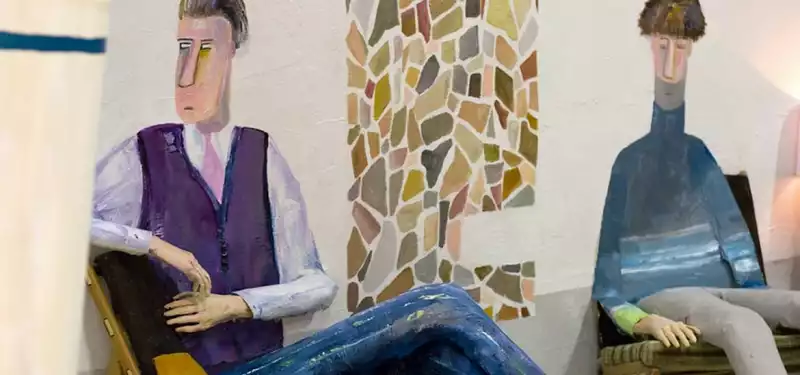Nov 12, 2014
Animator talks with Chris Wilder about the making of "The Bigger Picture"
The short list for this year's Academy Awards for Best Animated Short Film features ten distinguished films that use a variety of animation techniques, narrative structures, and stylistic approaches. Let's take a look at these films over the next few weeks, beginning with Daisy Jacobs' The Bigger Picture. [The Bigger Picture" is a creative fusion of life-size painted 2D animation and stop-motion handmade objects. The physicality of the materials and setting lend intimacy and realism to the story of two brothers caring for their ailing mother. Jacobs made this film as his graduation project at the National Film and Television School in the UK, and it received a great response, winning awards at festivals such as Cannes, Annecy, Hiroshima Fantoche, and DOK Leipzig.
We spoke with Chris Wilder, stop-motion animator for The Bigger Picture, about the film's unique production process and the challenges involved in making it. Here are his comments, along with a visual essay that takes us behind the scenes of the production:
Chris Wilder Very early in the storyboarding process, it was decided that the 3D items would be pulled into the wall by the characters and become 2D paintings. However, during the initial testing of the film, we quickly realized that most of the props we chose to have this happen (mainly kitchen items such as kettles, teapots, and plates) were very heavy.
Most of the props could not be secured to the wall long enough to pop out of the frame and shoot, and would fall noisily with large chunks of plaster from the characters' arms and sometimes the walls themselves. We decided at this point to make replicas of these props out of paper mache, light enough to mount on the wall or hang in the air.
In our method, Daisy would draw a linear 2D character animation on a flat wall, and I would work with her to animate the 3D elements of the scene (arms, tea cups, kettle, etc.).
Perhaps the main difference between animating a drawing on paper and a full-scale drawing is the level of physical endurance required of the animator. Daisy had made two small experimental films using this wall drawing technique and knew that working this way for six months was a very difficult challenge.
Daisy did all the painting for the film herself. One week she sat in her swivel chair, exhausted, to examine how the frames were coming together, but soon fell asleep. I had to poke her gloomily with the tip of my paintbrush. When she woke up, I handed her the palette and she went back to the wall. No matter how tired she was, she just kept on painting. The deadline for completion was very tight and we just kept pushing forward. Tears, tantrums, and sometimes crying were perfectly acceptable as long as we kept working.
One of the main difficulties we encountered during production was the combination of using straight-through animation and lip-syncing character dialogue. The film is built around several key conversations, and whenever we animated the dialogue, we had to time all the elements of the scene (lip-sync, paint animation movements, stop-motion movements, etc.) precisely, which meant that other animation elements were constantly under pressure and we were often unable to retrace our steps.
However, the knowledge that if we lost focus, everything would fall apart quickly, was probably what allowed us to maintain the concentration needed to complete the film in the allotted time. Fear drove the film and it became our friend.
Many of the creative results were often surprising, as we were in a sense inventing and shaping this technique while making the film; the idea of merging the 3D and 2D worlds had been tested before production, but never on the scale of an actual set piece.
Often the biggest scenes in the film had to be completed in the shortest amount of time: a vacuum cleaner sucking through a living room, a room filled with clingfilm water, Nick growing huge on a living room wall. In those cases, we gritted our teeth and began animating with the feeling that even if we didn't know exactly how to do it, we would just have to make it work. If it didn't work, we would keep trying until it did. The hours were long, the work was demanding, and we were often angry, but we kept at it.
Watch a behind-the-scenes video:
.



Post your comment